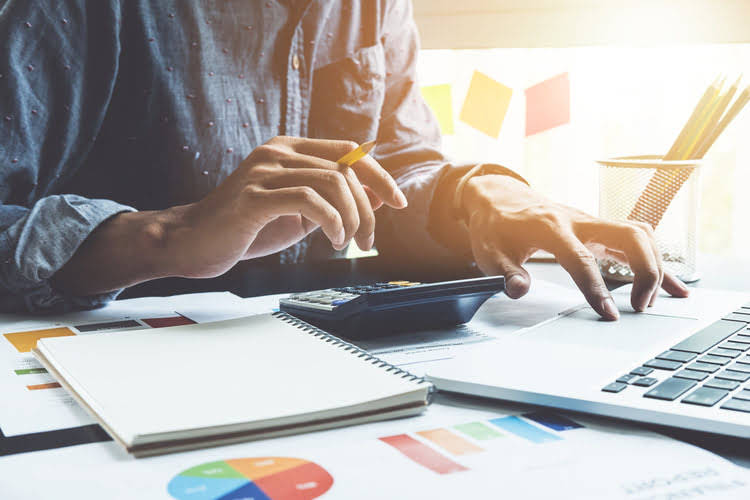
These economics improve the more a vehicle is driven due to the lower operating costs, meaning that vehicles used for commercial purposes (such as minibuses, vans, and two-wheelers) are more favorable for early transition. Despite high awareness of EVs, few individuals we surveyed understood the benefits, with some commercial fleet owners and bus associations expressing surprise at the favorable lifetime economics of EVs. However, many of the findings are likely still applicable in the overall South African context. (1) Define the basic condition of effective fixed assets in the power grid enterprise.
WHY SPEND MONEY ON R&D?
- However, once a project moves into the development phase, costs can be capitalized if certain conditions are met.
- Stable electricity supply and charging infrastructure will need to be built ahead of demand to mitigate the range anxiety that may hinder consumers from adopting EVs.
- Capitalizing R&D costs increases the equity base, potentially lowering the debt-to-equity ratio and presenting a stronger balance sheet.
- The equipment operations and maintenance unit establishes corresponding equipment ledgers in their respective management systems and completes the classification and creation of asset numbers according to the requirements of the finance department.
These capitalized costs are then recognized as assets on the balance sheet and amortized over their useful life. R&D amortization refers to spreading the cost of research and development expenses over their useful life instead of expensing them all at once. This approach is particularly relevant for intangible assets developed through R&D activities. Amortization is the process used for spreading the cost of an intangible asset (like software licenses, patents, or copyrights) over its useful life, making your business’s financial statements a more accurate reflection of its yearly expenses and income. This method ensures that the cost of assets that benefit your business over several years is recognized in a way that matches their contribution to generating revenue. The choice between capitalization and expensing also has tax implications.

Under U.S. GAAP
This official standard prevents manipulation and allows decision makers to see the amount spent by management for this essential function. However, this method of accounting means that companies (especially in certain industries) often fail to show some of their most valuable assets on their balance sheets. Specifically, the useful life, risk, profitability, and outlicensing capability of enabling technology may differ from the projects that it actually supports, and it therefore may meet the asset recognition criteria in FASB ASC 805. In this scenario, it may be concluded that the use of enabling technology is encompassed within existing products, IPR&D, and yet-to-be defined technology (i.e., goodwill).
Choosing the Right Accounting Method for Your Business
This transparency helps build trust and confidence in the company’s strategic direction and its commitment to innovation. Capitalizing these costs so that they are reported as assets is logical but measuring the value of future benefits is extremely challenging. Without authoritative guidance, the extreme uncertainty of such projects would leave the accountant in a precarious position.
Previously, the company’s investment in R&D would be fully deductible in the same fiscal year. This would lead to a scenario where the company breaks even, as its total expenses ($250,000 in operating expenses + $50,000 in R&D) match its revenue ($300,000). Imagine a startup company that throughout the year generates $300,000 in revenue and incurs $240,000 in operating expenses. Additionally, the company has decided to invest $60,000 in a new product development project, aiming to innovate and expand its market reach. When reading the above definition of capital expenses you can see, that one hand, a company is spending money and on the other hand, it is gaining something – an asses that they can keep using for a long time to create value for the business. Here, an interesting thing can happen to those capital expenses – they can be turned into assets.
Initial recognition: research and development costs

There is a presumption that the fair value (and therefore the cost) of an intangible asset acquired in a business combination can be measured reliably. Businesses conduct R&D for many reasons, the first and foremost being new product r&d accounting research and development. Before any new product is released into the marketplace, it goes through significant research and development phases, which include a product’s market opportunity, cost, and production timeline.
The company is researching the unknown, and therefore, at this early stage, no future economic benefit can be expected to flow to the entity. Considering how long-term the expected economic benefits could be, one could make the case that all R&D should instead be capitalized rather than treated as an expense. Nokia’s R&D efforts were spread across three distinct software operating systems that benefited only a single end market (mobile handsets). So, when Nokia spent an additional R&D euro on a single product, it was only benefiting a subset of its overall handset opportunity, and not all its other handset product markets.

Unlike all other vehicle segments assessed, two-wheelers (called boda bodas in much of East Africa and okadas in Nigeria) are predominantly purchased new in sub-Saharan Africa. More than nine in ten two-wheelers are purchased for commercial use as taxis or delivery services. Commercial use results in a higher average distance traveled per vehicle, which improves the TCO of the electric two-wheeler versus the ICE two-wheeler. This also results in a fairly high fleet turnover, with an urban owner in Kenya and Nigeria purchasing a new two-wheeler every two to three years, on average.
- The OECD also brings together multiple stakeholders to share good and innovative practices and discuss progress.
- When reading the above definition of capital expenses you can see, that one hand, a company is spending money and on the other hand, it is gaining something – an asses that they can keep using for a long time to create value for the business.
- Developing an electric two-wheeler that is both durable and capable of carrying a spare battery may be required to meet the needs of the sub-Saharan African two-wheeler driver.
- The principle of specialized assessment and graded identification is used to determine equipment disposal.
- Each development project must be reviewed at the end of each accounting period to ensure that the recognition criteria are still met.
- Subsequently, the development process of financial management and the theory of financial sharing are presented.
Most personal car owners in sub-Saharan Africa fit these criteria, even when factoring in time spent in traffic, as EVs are very efficient in start-stop conditions. (6) Establish a risk model to quantify the risk of an individual equipment. By multiplying the severity of failure and the probability of failure, the risk can be quantified. Therefore, the total risk of an asset group is the sum of risks of each individual asset it contains. We use the concept of cumulative discounts ?Risk to define the optimal replacement period for a given grid’s effective assets. The user layer is mainly the decision-makers of the group enterprise, including the group company and its subsidiaries, branches, and related companies.
